Top five tips and tricks for Ninja Village
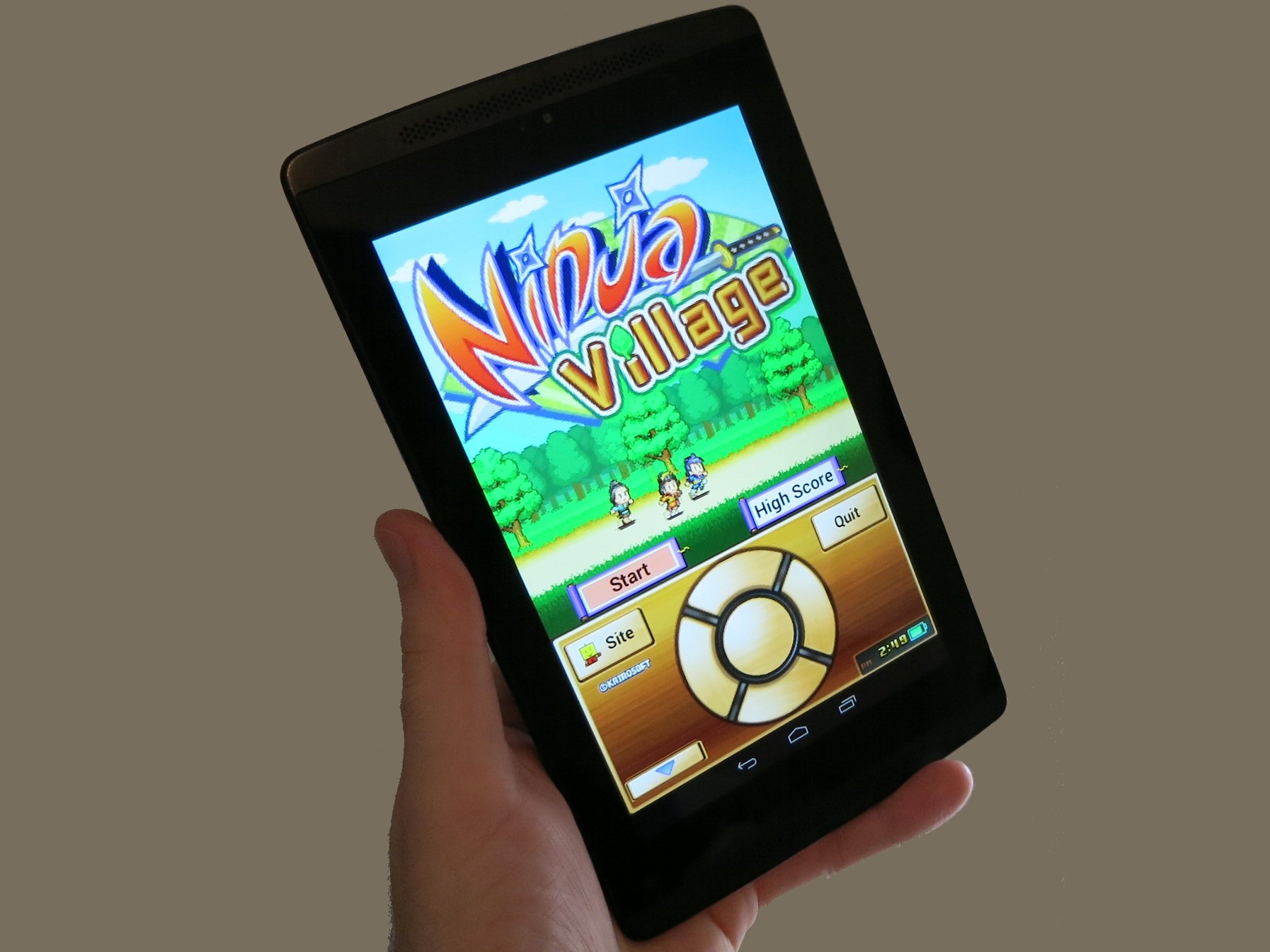
Kairosoft is the Japanese developer responsible for Game Dev Story and many more simulation games. A lot of their games are really similar to each other, but each one still has a unique setting that gives it special appeal. For instance: ninjas!
Ninja Village is a simulation game in which players create a village of ninjas in feudal Japan. You'll recruit villagers, develop an economy, and train an army in your efforts to support the Shogunate and unite all of Japan. Running a village while maintaining a military campaign can be complex and challenging. Luckily, we've assembled these tips and tricks to help your ninja village thrive.
Maximize income with a smart village layout
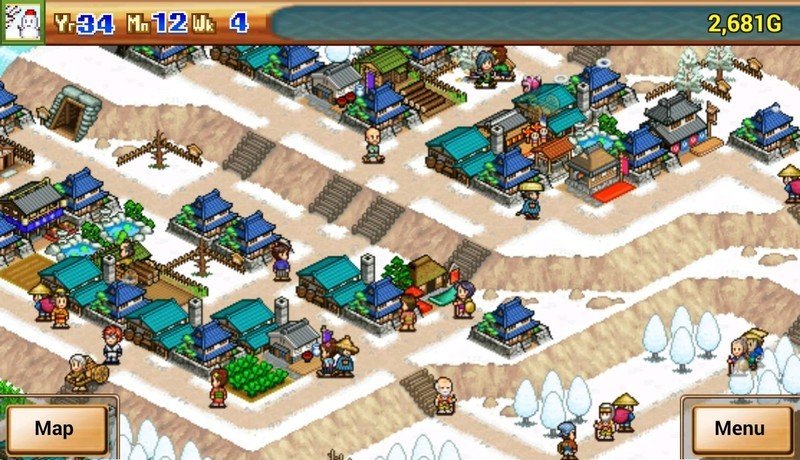
To recruit armed forces and defeat your opponents across the land, you'll need money. And the best way to earn money is with an efficient and well-maintained village layout. To start with, you'll have only one small piece of land to work with. As the game progresses, you can earn Land Deeds from opponents. Use these to unlock more land for your village.
However much land you have, it's important to make sure that it brings in as much money as possible. This requires careful planning and frequent reorganization of the village. Initially, you'll make money simply by selling excess food from fields. But soon, you can build a variety of shops that really bring in the money. The catch is that they require a production chain in order to maintain stock and service customers.
Generally, each shop needs a Workshop very close to it (preferably adjacent). Villagers take the goods produced from fields (and later rice paddies, lumber depots, and ore depots) to the workshops for processing. They then deliver the finished products from the workshops to your stores. You want to minimize the distance between the workshops and stores in order to help the stores remain stocked and bringing in the money.
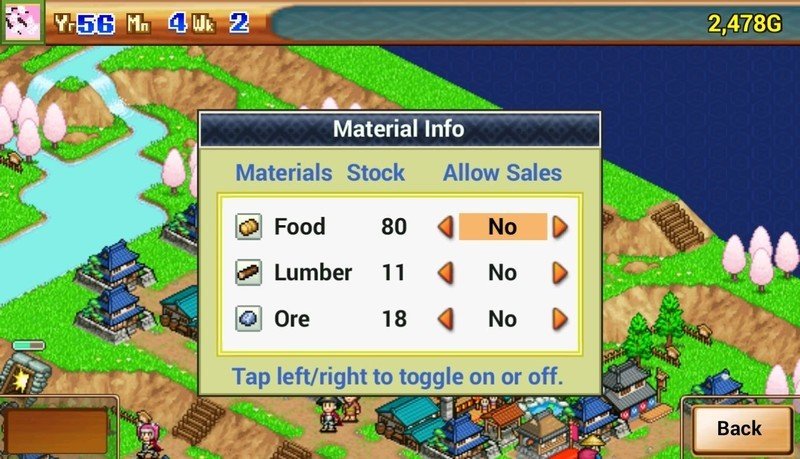
When you notice shops consistently selling out of goods even though they have workshops nearby, the problem could be that your village is selling too many raw materials before they get processed. Bring up the menu, select Info, and head to Materials. From there, you can set any low-stock material to "Allow Sales: No." Shops make a lot more money than the sale of raw materials, so keep them stocked!
You can also place environmental objects like trees and gardens near houses, workshops, shops, and other buildings to increase productivity. The key is to have houses and buildings accessible by road, and then place trees and other boosters behind them. Try to build city blocks with the boosters in the middle and the other buildings on the outside. Never put a tree next to a road where a house, industrial building, or shop could reside.
Be an expert in 5 minutes
Get the latest news from Android Central, your trusted companion in the world of Android
Finally, be sure to move things around as you unlock new buildings or discover production issues. Sometimes you might need to tear down a whole city block and try a new design. Once you find an efficient layout, it will require only minimal upkeep in the future.
Decide whether each villager will be a worker or a fighter
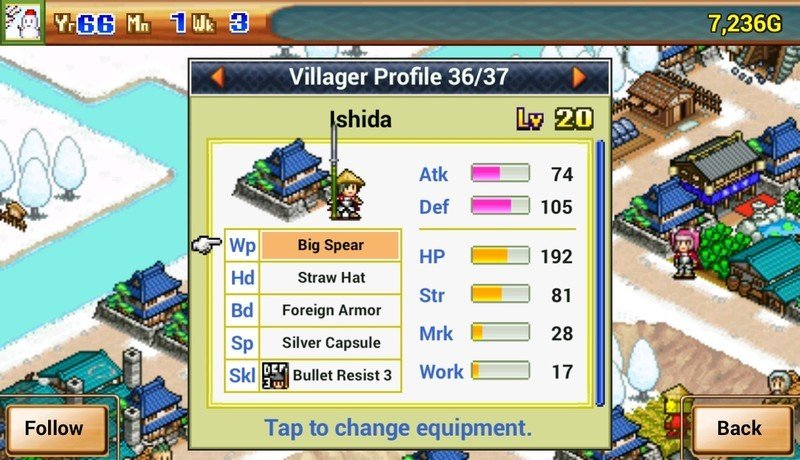
Villagers play two roles: working and fighting. Their suitability towards either task depends on their individual stats. The higher a villager's Work stat, the more work he or she will accomplish before returning home to rest. That doesn't mean someone with a low Work stat can't still be productive, though. They just need some training.
Training a villager raises one or more stats. The higher the villager's level, the more it costs to provide additional training. When you're trying to increase productivity, the most cost-effective approach is to simply train the lowest level people before the high level villagers.
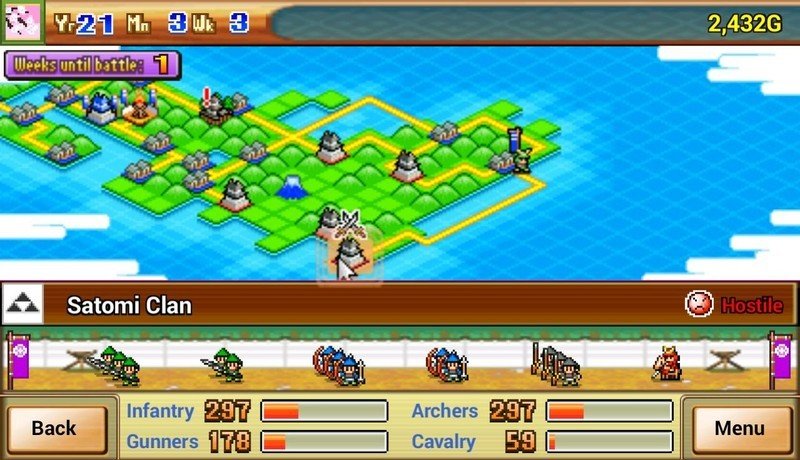
On the other hand, you also need a well-trained fighting force. Your fighters need more training than workers, so raise their levels higher than the rest. You can tell which villagers to train as warriors by heading to the training menu, selecting Order, and then sort by Atk (Attack). Train the people with high Atk to keep them ahead of the pack. They'll also become better workers!
Oh, and don't forget to keep your top fighters equipped with the best weapons, armor, and items that you can buy.
Create a winning battle formation
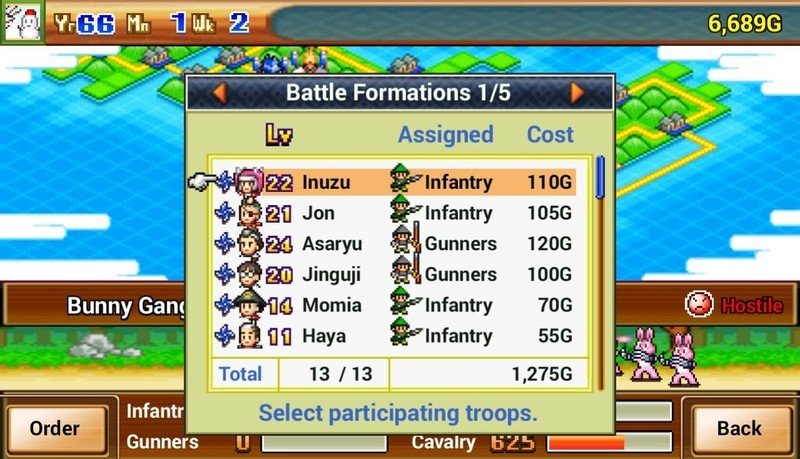
To actually win battles, you'll need a sufficient quantity of forces and a strong battle formation. Recruit lots of soldiers (especially Infantry) as money allows.
The keys to a winning formation are strong fighters and positioning. When you attack an opponent, edit the Members and Formation before choosing to March. After picking Members, tap Order and sort by Atk. Put your top attackers in the group.
As for your Formation, each fighter can be placed in the Front, Center, or Rear of the group. Put your archers and gunners in the middle or rear. Infantry and cavalry should take the front, where they can absorb the most damage and protect other units.
Choose your battles wisely
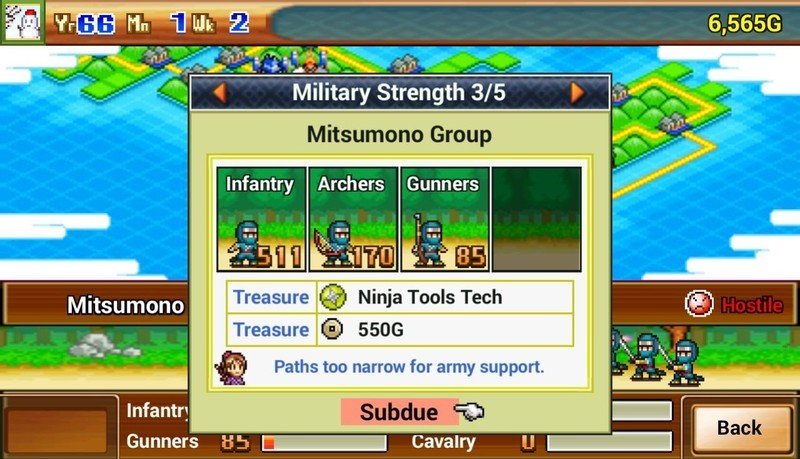
At any given time, you probably have several opponents to choose from. Defeating an opponent will cause other enemies to increase their forces, so the order of your targets matters.
How do you know who to attack? Your first priority should be the rewards the opponent offers. Select an enemy and you'll see the two or three treasures they possess under their unit counts. The most important treasure to seek is called Tactics. Each time you win Tactics, you gain the ability to include another fighter in your war party (up to a maximum of 17). The next most important treasures are new unit types (archers, gunners, and cavalry) and Land Deeds.
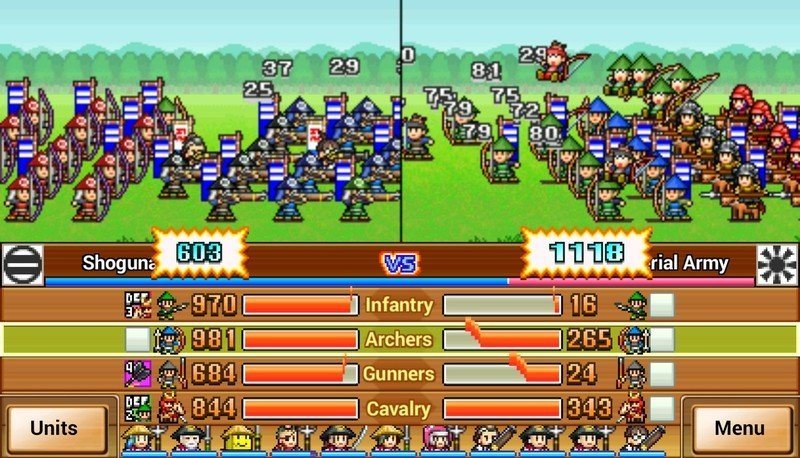
Losing battles wastes in-game time and money. So your second consideration should be whether a battle is actually winnable. Annoyingly, a tie counts as a loss, so you really want to be sure that your forces can wipe out the other side within the allotted three rounds. If the enemy forces seem too large to defeat, spend some time recruiting additional soldiers before launching the attack.
The end game is not the end.
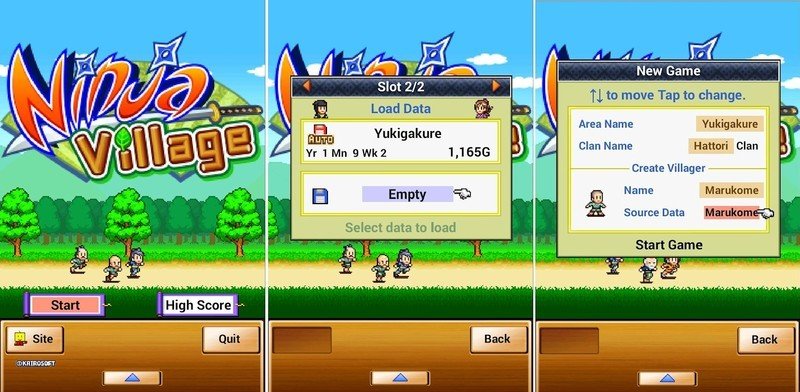
The overall goal in Ninja Village is to vanquish all castle battles (the ones that involve your entire army, not just villagers) within 16 game years. That won't actually be possible during your first playthrough. Luckily, the game itself doesn't stop after 16 years. You can keep going after that, continuing to build your village and attack enemies.
Hitting 16 years also unlocks the ability to increase the game speed. You want to do this as soon as possible so that you can hurry to your next playthrough. Select System from the Menu and go to Options. From there, change Speed to Fast. Now you'll earn money twice as fast!
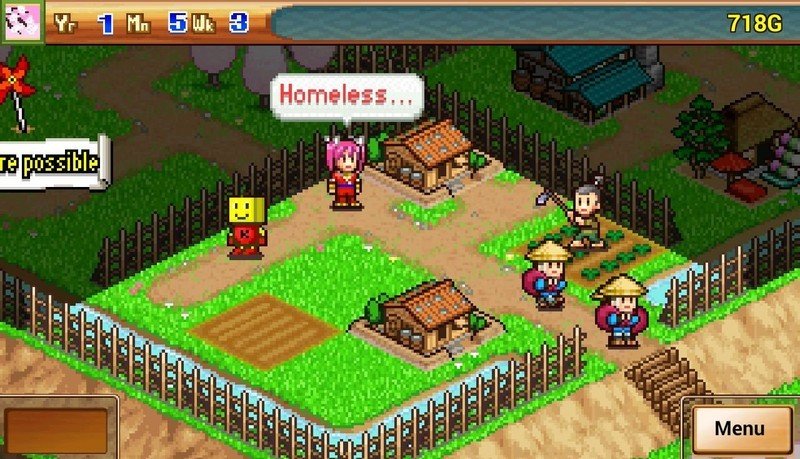
Don't end your first playthrough until you defeat the true final boss and win the Kairo Armor. This is the best armor in the game, deflecting attacks from opponents. It also gives your ninja a cheerful robotic appearance.
Now return to the Title. Tap Start and select a new save slot. You can choose a previous villager to pattern your new villager after, retaining that villager's appearance and skills. Now equip the imported villager with the Kairo Armor and start your new conquest!
What are your top tips and tricks for Ninja Village??
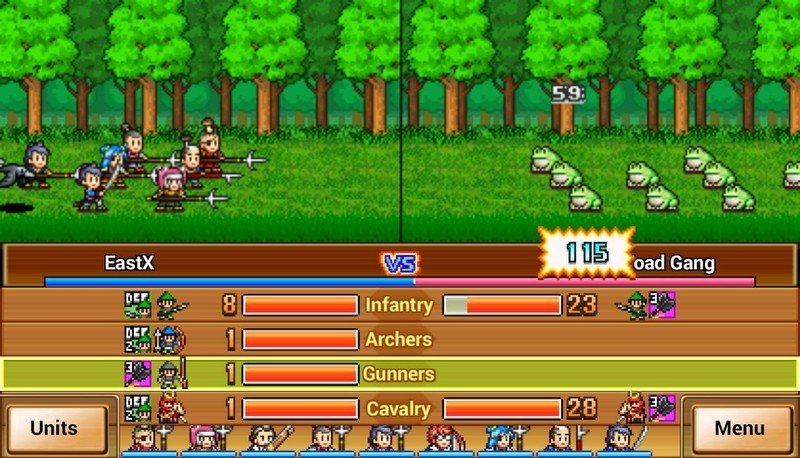
We hope you've found this guide useful. If you have any tips of your own, please share them in the comments below. And be sure to let us know which Kairosoft games you'd like to see us cover in the future!
Ninja Village is available for $4.99 on Google Play.

